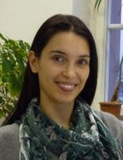BibTeX
@inproceedings{Agnihotri_ICML24,
TITLE = {{CosPGD}: {A}n Efficient White-Box Adversarial Attack for Pixel-Wise Prediction Tasks},
AUTHOR = {Agnihotri, Shashank and Jung, Steffen and Keuper, Margret},
LANGUAGE = {eng},
ISSN = {1938-7228},
YEAR = {2024},
PUBLREMARK = {Accepted},
BOOKTITLE = {Proceedings of the 41st International Conference on Machine Learning (ICML 2024)},
PAGES = {26495--26516},
SERIES = {Proceedings of the Machine Learning Research},
ADDRESS = {Vienna, Austria},
}Endnote
%0 Conference Proceedings %A Agnihotri, Shashank %A Jung, Steffen %A Keuper, Margret %+ External Organizations Computer Vision and Machine Learning, MPI for Informatics, Max Planck Society Computer Vision and Machine Learning, MPI for Informatics, Max Planck Society %T CosPGD: An Efficient White-Box Adversarial Attack for Pixel-Wise Prediction Tasks : %G eng %U http://hdl.handle.net/21.11116/0000-000F-3F1E-B %D 2024 %B 41at International Conference on Machine Learning %Z date of event: 2024-07-21 - 2024-07-27 %C Vienna, Austria %B Proceedings of the 41st International Conference on Machine Learning %P 26495 - 26516 %B Proceedings of the Machine Learning Research %@ false

